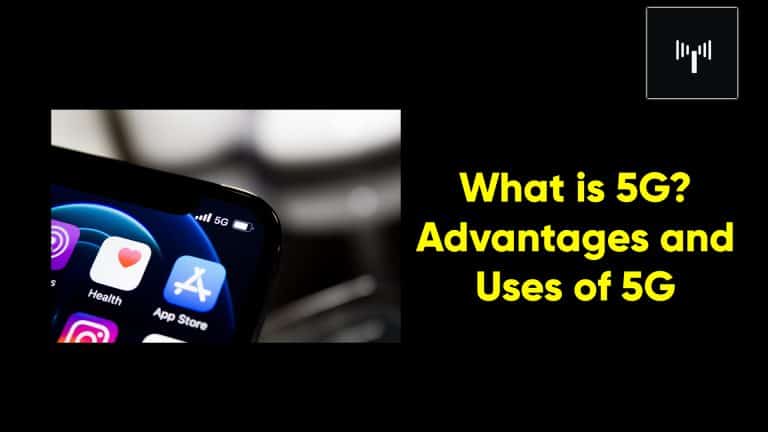5G is a relatively new technology, having been introduced after 1G, 2G, 3G, and 4G. 5G technology allows us to create a network of machines and devices that can be utilized to connect nearly everyone on the planet. The most significant difference between 4G and 5G is that 5G is 100 times faster than 4G in terms of bandwidth.
Contents
What exactly is 5G?
Specifically, in the field of telecommunications, 5G is the most recent mobile network technology, which stands for the fifth generation and is the most recent generation. It is a more sophisticated version of wireless technology that is designed to improve mobile technology performance.
As we all know, technology allows us to perform our everyday activities more quickly and efficiently than ever before. The signal speed of 5G technology can be sent up to 1500 feet without any attenuation.
5G is a relatively new technology, having been introduced after 1G, 2G, 3G, and 4G. 5G technology allows us to create a network of machines and devices that can be utilized to link nearly everyone on the planet. The most significant difference between 4G and 5G is that 5G is 100 times faster than 4G in terms of throughput. As our everyday needs in both personal and professional life grow in importance, we must improve our existing technology to keep up with the times and meet these demands.
5G is a higher frequency radio waves version of the preceding 4G cellular network that is an improvement from the previous generation. 5G also heralds the beginning of a new era in the realm of technology.
What is the operation of 5G technology?
Because of the increased bandwidth available with this technology, a significant amount of data may be transferred across a wireless network. In 5G networks, each cell is comprised of a network of cell sites that are divided into sectors and send encoded information through radio waves to the rest of the network. Each cell site is connected to a network backbone through the use of either wired or wireless connections.
When compared to previous generations, 5G technology is not restricted to the use of a new radio spectrum. It is being developed to enable diverse wireless network technologies.
The 5G structure is comprised of software-defined platforms that are capable of constructing sub-network structures known as network slices. These slices enable network managers to direct network activity based on the presence of people and devices on the network.
What is the difference between 4G and 5G?
- Reliability
Because of the high band spectrum, 5G is more dependable than 4G. Your gadgets will be able to obtain ultrafast speeds when operating in this band.
- Latency
It is the length of time it takes for devices to communicate with one another after they have established contact. Within milliseconds of each other, a massive volume of information is transferred and received using 5G technology.
- Speed
Because of the high speed of 5G technology, it can operate in real-time environments. Its transfer speeds range from 50 megabits per second to more than a gigabit per second.
- Capacity:
In 5G technology, a greater number of the latest electronic gadgets may link extremely readily to one another because of the increased bandwidth available to them.
The following are some of the benefits of 5G technology:
- 5G technology allows for faster transfers and peer-to-peer communication because of the increased speed.
- It has reduced latency and more bandwidth accessible due to its higher capacity.
- The ability to connect to a higher number of devices and the implementation of virtual networks are two additional benefits.
- It is involved in the development of robotic medical advances, artificial intelligence diagnostics, and telemedicine.
- The development of Internet of Things devices such as doorbell cameras, fitness trackers, and alarm systems.
- An increased 5G infrastructure, on the other hand, allows homeowners to negotiate a cell tower lease and receive compensation from wireless carriers.
Uses of 5G Technology Include the Following:
- Automated Manufacturing Industries
- Data analytics and testing are important.
- Green Technology is a term that refers to the use of environmentally friendly practices.
- Communication in an emergency
- Health-Care-Related Industries
- LTE Broadcast Multicast (also known as LTE-B Multicast).
- Blockchain technology is becoming increasingly popular.
- The Impact of the OSS-BSS
- Power Electronics
- Wireless cellular networks (Wi-Fi)


